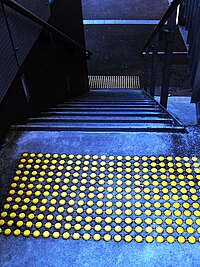
Photo from wikipedia
OBJECTIVE Postoperative neurologic outcomes after primary somatosensory cortex (S1) resection have not been well documented. This study was designed to evaluate the neurologic deterioration that follows resection of the S1… Click to show full abstract
OBJECTIVE Postoperative neurologic outcomes after primary somatosensory cortex (S1) resection have not been well documented. This study was designed to evaluate the neurologic deterioration that follows resection of the S1 areas and to assess the risk factors associated with these morbidities. METHODS We reviewed 48 consecutive patients with medically intractable epilepsy who underwent resection of the S1 and/or the adjacent cortex. The 48 patients were categorized into 4 groups according to the resected area as seen on postoperative magnetic resonance images: group 1 (resection of S1 only; n = 4), 2 (the posterior parietal cortex [PPC] only; n = 24), 3 (S1 and PPC; n = 10), and 4 (S1 and precentral gyrus; n = 10). RESULTS After the resection of S1 areas, 19 patients (40%) experienced neurologic worsening, including 6 (13%) with permanent and 13 (27%) with transient deficits. Patients with permanent deficits included 2 with motor dysphasia, 1 with dysesthesia, 2 with equilibrium impairments, and 1 with fine movement disturbance of the hand. The overall and permanent neurologic risks were 25% and 0% in group 1, 17% and 4% in group 2, 80% and 20% in group 3, and 60% and 30% in group 4, respectively. Multivariate analysis determined that the resection of both S1 and PPC was the only significant risk factor for neurologic deficits (P = 0.002). CONCLUSIONS The neurologic risk of the resection of S1 and/or its adjacent cortical areas was 40%. The additional resection of the PPC was significantly associated with the development of postoperative neurologic impairments.
Journal Title: World neurosurgery
Year Published: 2017
Link to full text (if available)
Share on Social Media: Sign Up to like & get
recommendations!